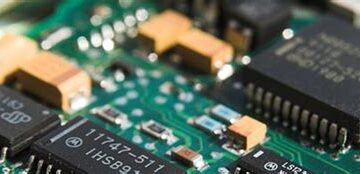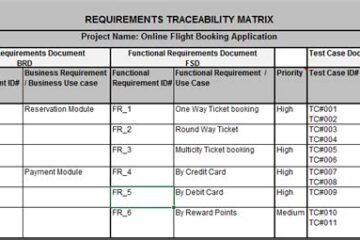Introduction to BGA Rework
Ball Grid Array (BGA) is a surface-mount packaging used for integrated circuits. BGA packages are used to permanently mount devices such as microprocessors. A BGA can provide more interconnection pins than can be put on a dual in-line or flat package. The whole bottom surface of the device can be used, instead of just the perimeter.
BGA devices are not easy to repair or replace. The solder balls are melted to make the connection to the PCB, and specialized equipment is needed to install and remove BGA packages. This specialized equipment is known as a BGA rework station.
What is a BGA Rework Station?
A BGA rework station is a machine designed specifically for removing and installing BGA components from printed circuit boards (PCBs). It typically consists of a placement head, a reflow oven, and a vision system for alignment. The placement head picks up the BGA component and precisely aligns it with the pads on the PCB. The reflow oven then heats the component and PCB to melt the solder balls and create the electrical and mechanical connection.
Key Components of a BGA Rework Station
-
Placement Head: This part picks up the BGA component and aligns it with the PCB. It usually has a vacuum system to hold the component.
-
Reflow Oven: This is used to heat the BGA component and PCB to melt the solder balls. It can be either infrared or hot air based.
-
Vision System: This is used to align the BGA component with the pads on the PCB. It typically consists of cameras and software for image recognition.
-
Temperature Control: Precise temperature control is crucial for successful BGA rework. The station should be able to maintain specific temperature profiles.
-
Accessories: Various accessories are used with BGA rework stations, such as nozzles, templates, and solder paste dispensers.
Factors to Consider When Choosing a BGA Rework Station
1. Alignment Accuracy
Proper alignment of the BGA component with the pads on the PCB is critical for a successful rework. Look for a station with a high-quality vision system that can provide accurate alignment. The placement head should also be precise and repeatable.
2. Temperature Control
The reflow process requires precise temperature control to avoid damaging the BGA component or the PCB. The rework station should be able to maintain specific temperature profiles and have good temperature uniformity across the heating area.
3. Ease of Use
BGA rework can be a complex process, so it’s important to choose a station that is easy to set up and operate. Look for features like intuitive software, clear displays, and simple controls.
4. Flexibility
Different BGA components and PCBs may require different rework profiles. A flexible rework station that can accommodate various component sizes and heating profiles can save time and money in the long run.
5. Cost
BGA rework stations can vary widely in price. While it’s important to invest in a quality machine, it’s also necessary to consider your budget and the expected return on investment.

Types of BGA Rework Stations
BGA rework stations can be categorized based on their heating method and the level of automation they provide.
Infrared (IR) BGA Rework Stations
These stations use infrared radiation to heat the BGA component and PCB. IR stations are generally less expensive than hot air stations and can provide good temperature uniformity. However, they may not be suitable for all types of PCBs and components.
Hot Air BGA Rework Stations
These stations use forced hot air to heat the BGA component and PCB. They provide more localized heating than IR stations and can be more suitable for dense PCBs or sensitive components. However, they are generally more expensive.
Semi-Automatic BGA Rework Stations
These stations automate some parts of the rework process, such as alignment or temperature control, but still require operator input for other steps. They can provide a good balance of speed, accuracy, and cost.
Fully Automatic BGA Rework Stations
These stations automate the entire rework process from alignment to reflow. They are the most expensive option but can provide the highest throughput and consistency. They are best suited for high-volume production environments.
BGA Rework Process
The typical BGA rework process involves the following steps:
-
Preparation: The PCB is cleaned and any old solder or residue is removed from the BGA pads.
-
Alignment: The BGA component is aligned with the pads on the PCB using the vision system.
-
Solder Paste Application: Solder paste is applied to the pads on the PCB.
-
Component Placement: The BGA component is placed onto the pads using the placement head.
-
Reflow: The BGA component and PCB are heated according to a specific temperature profile to melt the solder balls and create the connection.
-
Cooling: The PCB is cooled to solidify the solder joints.
-
Inspection: The reworked area is inspected for any defects or misalignment.
Best Practices for BGA Rework
To ensure successful BGA rework, consider the following best practices:
- Always follow the manufacturer’s recommended temperature profiles and procedures for the specific BGA component and PCB.
- Ensure proper cleaning and preparation of the PCB before rework.
- Use high-quality solder paste and apply it consistently.
- Verify alignment before reflowing the component.
- Allow sufficient cooling time after reflow to avoid disturbing the solder joints.
- Inspect the reworked area thoroughly and perform any necessary testing.
Frequently Asked Questions (FAQ)
1. What is the difference between BGA rework and BGA repair?
BGA rework involves completely removing and replacing a BGA component, while BGA repair involves fixing issues with an existing component, such as replacing individual solder balls.
2. Can I use a regular soldering iron for BGA rework?
No, a regular soldering iron does not provide the precise temperature control and uniform heating required for BGA rework. A specialized BGA rework station is necessary.
3. How much does a BGA rework station cost?
The cost of a BGA rework station can range from a few thousand dollars for a basic model to tens of thousands of dollars for a fully automatic system. The cost depends on factors such as the level of automation, the quality of the vision system, and the heating method.
4. What training is required to operate a BGA rework station?
While the specific training requirements may vary depending on the machine and the employer, operators typically need to have a good understanding of electronics, soldering, and the BGA rework process. Many manufacturers offer training courses for their equipment.
5. Can a BGA rework station be used for other types of components?
Some BGA rework stations are designed specifically for BGAs, while others may be able to handle other types of surface-mount components. It’s important to check the specifications of the machine and ensure it is suitable for your specific needs.
Conclusion
Choosing the right BGA rework station is crucial for ensuring successful and efficient BGA rework. Consider factors such as alignment accuracy, temperature control, ease of use, flexibility, and cost when making your selection. Also, ensure that you follow best practices and manufacturer guidelines for the rework process to achieve the best results.
With the right equipment and procedures, BGA rework can be a reliable and cost-effective way to repair or upgrade electronic devices. Investing in a quality BGA rework station can provide long-term benefits in terms of reduced downtime, improved quality, and increased customer satisfaction.



0 Comments